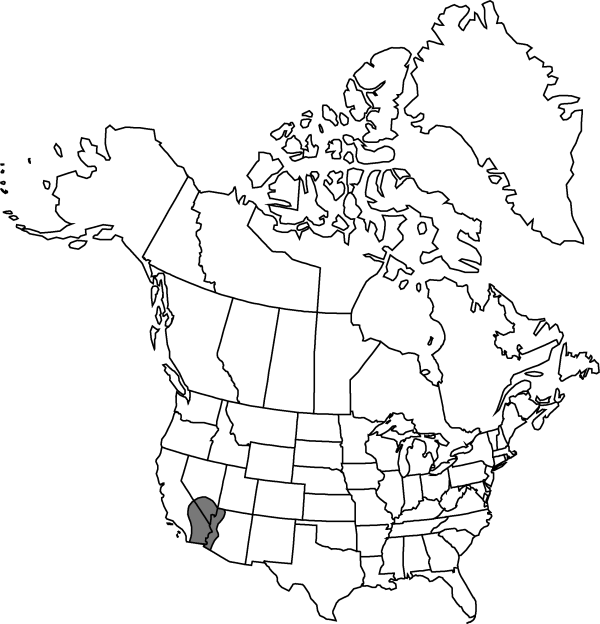Difference between revisions of "Cylindropuntia echinocarpa"
in C. Backeberg and F. M. Knuth, Kaktus-ABC, 124. 1935.
FNA>Volume Importer |
imported>Volume Importer |
||
| (One intermediate revision by the same user not shown) | |||
| Line 1: | Line 1: | ||
{{Treatment/ID | {{Treatment/ID | ||
|accepted_name=Cylindropuntia echinocarpa | |accepted_name=Cylindropuntia echinocarpa | ||
| − | |accepted_authority=(Engelmann & J. M. Bigelow) | + | |accepted_authority=(Engelmann & J. M. Bigelow) F. M. Knuth |
|publications={{Treatment/Publication | |publications={{Treatment/Publication | ||
|title=in C. Backeberg and F. M. Knuth, Kaktus-ABC, | |title=in C. Backeberg and F. M. Knuth, Kaktus-ABC, | ||
| Line 52: | Line 52: | ||
-->{{#Taxon: | -->{{#Taxon: | ||
name=Cylindropuntia echinocarpa | name=Cylindropuntia echinocarpa | ||
| − | |authority=(Engelmann & J. M. Bigelow) | + | |authority=(Engelmann & J. M. Bigelow) F. M. Knuth |
|rank=species | |rank=species | ||
|parent rank=genus | |parent rank=genus | ||
| Line 66: | Line 66: | ||
|publication year=1935 | |publication year=1935 | ||
|special status= | |special status= | ||
| − | |source xml=https:// | + | |source xml=https://bitbucket.org/aafc-mbb/fna-data-curation/src/2e0870ddd59836b60bcf96646a41e87ea5a5943a/coarse_grained_fna_xml/V4/V4_221.xml |
|subfamily=Cactaceae subfam. Opuntioideae | |subfamily=Cactaceae subfam. Opuntioideae | ||
|genus=Cylindropuntia | |genus=Cylindropuntia | ||
Latest revision as of 21:57, 5 November 2020
Trees or shrubs, spreading, densely branched, 0.5–2 m. Stem segments usually firmly attached, terminal segments sometimes easily detached, green to light gray-green, cylindric, 3–7.5(–12) × 1–2.5 cm; tubercles salient, short oval, 0.4–1.3(–1.5) cm, moderately broad; areoles broadly elliptic, 4–4.5 × 2–3.5 mm; wool whitish, yellow to tan, aging gray. Spines (6–)10–17(–22) per areole, accompanied by 0–5 short bristlelike spines at areole margins, at most areoles, most prominent in adaxial ones, much interlaced with those of adjacent areoles, obscuring stems, sometimes brushlike; major abaxial spines whitish, yellow to tan, usually subterete to flattened, spreading to deflexed, the longest 20–30(–45) mm; major adaxial spines erect or spreading, white, pale yellow, or tan to brown (rarely deep red-brown), terete, the longest 22–35(–50) mm; sheaths whitish with yellow to golden tips, baggy. Glochids conspicuous in broad adaxial crescent, yellow, 3–4(–5) mm. Flowers: inner tepals light green to yellow-green, sometimes suffused with maroon or rose, spatulate, 20–23 mm, emarginate-apiculate; filaments greenish white or yellow, sometimes suffused with bronze or rose, but not red; anthers yellow; style and stigma lobes whitish, cream to light green. Fruits tan at maturity, obconic to subspheric, 13–23 × 11–20 mm, dry, tuberculate, densely spiny, sometimes burlike, with apical flange around deep umbilicus; basal tubercles not markedly longer than distal ones; areoles 16–24(–36). Seeds pale yellow, angular to squarish in outline, warped, 4–6 × 3.5–5 mm, sides smooth, each with 2–4 large depressions; girdle smooth (rarely with very narrow ridge). 2n = 22.
Phenology: Flowering spring (Mar–Jun).
Habitat: Mojave and Sonoran deserts, desert grasslands, juniper and oak-juniper woodlands, flats, bajadas, canyons, sandy, loam, alluvial to gravelly substrates
Elevation: 50-1700 m
Distribution

Ariz., Calif., Nev., Mexico (Baja California, Sonora).
Discussion
A dwarf form, with narrow terminal stem segments bearing few spines per areole, and one spine longer than the others, occurs on the very arid flats along the lower Colorado River in California and Arizona and has been recognized as Opuntia wigginsii L. D. Benson; however, numerous intermediate to more robust forms make recognition of the dwarf form untenable. Although exceptions occur, plants to the north and west in the range tend to be more spiny and to bear yellow to yellow-green flowers.
Cylindropuntia echinocarpa hybridizes with C. acanthocarpa [= C. ×deserta (Griffiths) Pinkava (D. J. Pinkava 1999)], C. whipplei, and C. munzii. Cylindropuntia ×deserta, found in western Arizona and southern California, has reddish filaments, short tubercles, variably sized spines/areole, and dry spiny fruits.
Selected References
None.